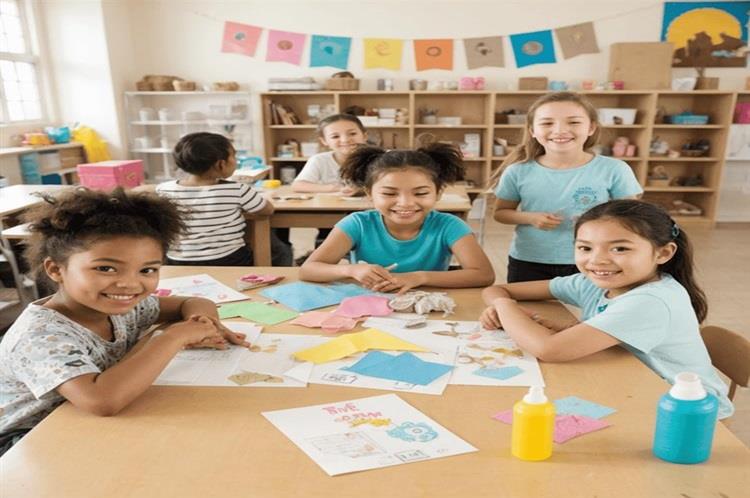
- 28 April 2024
- 4906 Views
Introduction to Resin
Resin is a highly favored material in both artistic and functional crafts, renowned for its versatile applications and robust final result. Typically crafted from synthetic chemicals, resin is utilized in a diverse array of creations, from intricate jewelry and decorative art to robust furniture coatings and automotive finishes. Despite its widespread use and aesthetic appeal, resin's chemical makeup, especially in forms such as epoxy resin and polyester, can be particularly risky for children. The potential for toxicity raises concerns, as children are more susceptible to the adverse effects of harsh chemicals, making it crucial to consider safer alternatives for young craft enthusiasts.
Technical Information about Resin
In the realm of arts and crafts, resin usually refers to substances like epoxy and polyester resin—both are types of thermosetting plastics which undergo a permanent hardening process when mixed with a catalyst. Epoxy resin is celebrated for its crystal-clear appearance and exceptional strength, ideal for projects requiring a transparent finish and a durable bond, such as in jewelry making or as a protective coating. On the other hand, polyester resin, often more budget-friendly, is commonly used for sturdier, larger-scale projects like constructing fiberglass items. However, both types of resin emit volatile organic compounds (VOCs) and other toxic chemicals during the curing process, which can be harmful if inhaled, necessitating good ventilation and careful handling, especially around children.
Benefits and Risks of Using Resin
Benefits:
- Durability: Resin forms a tough, protective outer layer that is impervious to water and resistant to mechanical wear, ensuring longevity of the crafts.
- Aesthetic Quality: It achieves a glossy finish that significantly enhances the underlying colors and textures, adding depth and vibrancy to the artwork.
- Flexibility: Its versatility makes it suitable for a vast range of applications, from fine art to industrial manufacturing, providing solutions across a spectrum of needs.
Risks:
- Toxicity: The chemical components in resin can be harmful, releasing fumes that might lead to respiratory problems, skin irritation, or other health complications upon exposure.
- Complexity of Use: Proper mixing, application, and curing of resin require precise control over conditions and proportions, which can be daunting and risky without adequate knowledge and experience.
- Environmental Concerns: Non-biodegradable nature of synthetic resins contributes significantly to environmental pollution, posing disposal issues and long-term ecological impacts.
Polyurethan
Safe Alternatives to Resin for Kids
Water-Based Polyurethane This safer alternative mimics the clear finish of resin without associated toxic fumes, making it a user-friendly option for children's projects. Water-based polyurethane is easy to apply, dries quickly, and can be cleaned up with just water, presenting a minimal health risk.
PVA Glue As a staple in classroom crafts, PVA glue offers versatility and safety. It provides a reliable semi-gloss finish and can serve both as a glue and a sealing coat, perfect for a range of creative projects without the risk of toxic exposure.
Air-Dry Clays These clays are superb for molding and sculpting without the need for a kiln or oven, eliminating exposure to toxic substances. They dry naturally, can be decorated with child-safe paints, and offer a tactile experience that stimulates creativity and motor skills.
Silicone Putty
- Acrylic Gel Mediums These are excellent for texturizing and thickening acrylic paints without losing color depth, doubling as a safe sealant for finished artwork. Their ease of use and water-based composition make them ideal for educational environments.
- Biodegradable Resins Made from natural plant extracts, these resins offer an eco-friendly alternative to traditional synthetic resins. They are perfect for environmentally conscious crafting and are safe for kids to use, although availability might still be limited.
- Cornstarch and Baking Soda Clay This homemade clay is an excellent alternative for younger children. Made from a mixture of cornstarch, baking soda, and water, this clay can be cooked on the stove to create a smooth, pliable material that hardens as it cools. Once dry, it can be painted or sealed with a non-toxic sealant. This type of clay is ideal for making ornaments, figurines, and other small decorative items.
- Soy-Based Bioplastics Emerging as a sustainable crafting option, soy-based bioplastics are made from natural and renewable soybeans, offering a biodegradable solution that is both safe for kids and environmentally friendly. These bioplastics can be molded and colored, providing a versatile medium for various crafting projects.
Biodegradable Resins
Alginate Alginate, derived from seaweed, is a natural and safe product commonly used in culinary and dental applications for molding. In crafts, it’s perfect for creating detailed impressions and molds that can be used with other safe materials like plaster or clay. It's completely non-toxic and safe for children to handle.
Wheat Paste This traditional glue made from wheat flour and water is a fantastic, eco-friendly adhesive for paper mache projects. It's incredibly easy to make at home, non-toxic, and surprisingly strong. Ideal for projects involving paper crafting, it's a safe option for kids of all ages.
Silicone Putty Silicone putty is a non-toxic, food-grade material that's excellent for creating molds and impressions. It sets quickly at room temperature and does not release harmful chemicals, making it safe for children to use. Kids can use it to mold objects or create shapes that can be painted after curing.
By incorporating these safe, non-toxic alternatives into children's crafting projects, parents and educators can help foster a safe, creative, and environmentally conscious learning environment. Each alternative offers unique properties and opportunities for creative exploration, ensuring that children can learn and create without exposure to harmful chemicals.
